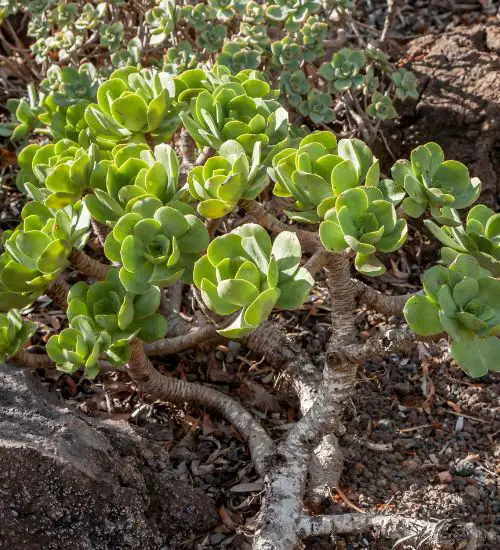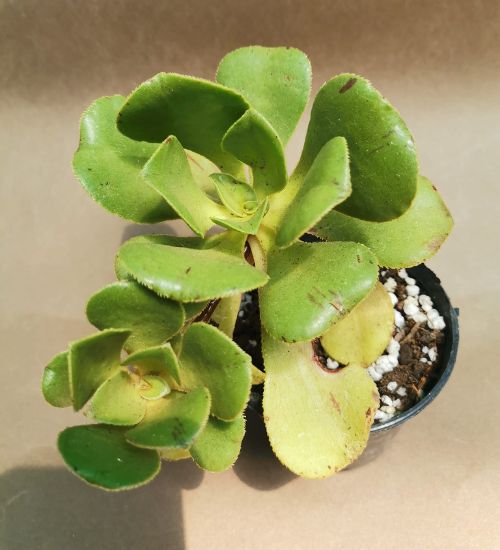Sun: full sun to partial shade
Water: Typical water needs for a succulent
Temperature: Zone 9a from 20° F to 25° F (-6.7 ° C to -3.9° C)
Winter Survival: Winter hardy
Propagation: cuttings, seeds
Flower: in the Spring and early Summer
Flower Type:
Toxic: Generally non-toxic to humans and animals
Dormant: summer
Space Requirement: Indoors & Outdoors
Common Problems: No major pests, Plants may rot if overwatered
Where to buy Aeonium glutinosum?
Basc Care for Aeonium glutinosum
Watering
Can you water your succulent more than what its need? The answer is yes and no. In extreme conditions, you can water your plants more often when you notice the soil is completely dry.
One simple tip for you is that you can use some online apps to check the soil status before you go water your succulents. I would recommend the ThePlantsCheck app, it has some nice features there.
Fertilizing
Only feed this succulent during its active growing seasons which means winter. Use the right fertilizer applied in the right amounts. Applying half-strength balanced fertilizer every month or so is recommended for optimal results.
Do not fertilize during summer as the plant is dormant.
Sun & Location Requirements for "Aeonium glutinosum"
Aeonium glutinosum requires full sun to partial shade. It's best to keep it in an area of your garden or home that gets plenty of bright, indirect sunlight throughout the day. When temperatures are too hot and direct sunlight is too intense, try moving Aeonium glutinosum to a shadier spot for part of the day.
As per this succulent profile, it is only able to stay healthy when the environment temperature is above the range of zone 9a from 20° F to 25° F (-6.7 ° C to -3.9° C).
Aeonium glutinosum is an incredibly resilient winter hardy plant that can survive in freeze conditions. Its thick leaves and stems, deep-rooted roots, and ability to store water all contribute to its ability to stay alive even in the coldest of winters. The roots reach deeper into the soil than most other succulents, allowing them to absorb moisture when the air is dry and cold.
Any succulents in the group will need a medium space to grow. You can place your pot at your table or window. Since this plant needs more space than mini succulents, you should consider do not plant them together with other succulents/plants.
Aeonium glutinosum also benefits from some indirect light throughout the day as well, so make sure you give it enough space to soak up light without becoming too exposed to heat.
Propagation
One way to propagate Aeonium glutinosum is by cutting
Propagating Aeonium glutinosum from seeds is a great way to produce new plants without relying on cuttings or divisions. It's important to look for healthy, dark and plump seeds that are slightly sticky when touched. The soil should be pre-mixed with well-draining potting mix, before evenly sowing the seeds and pressing them into the surface. To ensure successful germination, gentle misting of the soil should be done and placed in indirect light.
Toxicity

Aeonium glutinosum is generally non-toxic to humans and animals. However, the plant may contain certain toxins which can cause mild skin irritation if it is ingested or comes in contact with skin. Therefore, it is important to keep the plant away from children and pets for safety reasons.
Pests and Diseases
Aeonium glutinosum is not affected too much by common pests and diseases like most of the other succulents.
It may get attacked by %pest_names%. To prevent this from happening, keep your succulent in a well-ventilated area and check it regularly for any signs of pests or health problems. If you do spot any, treat the plant using below methods.
%pest_treatment_methods%


